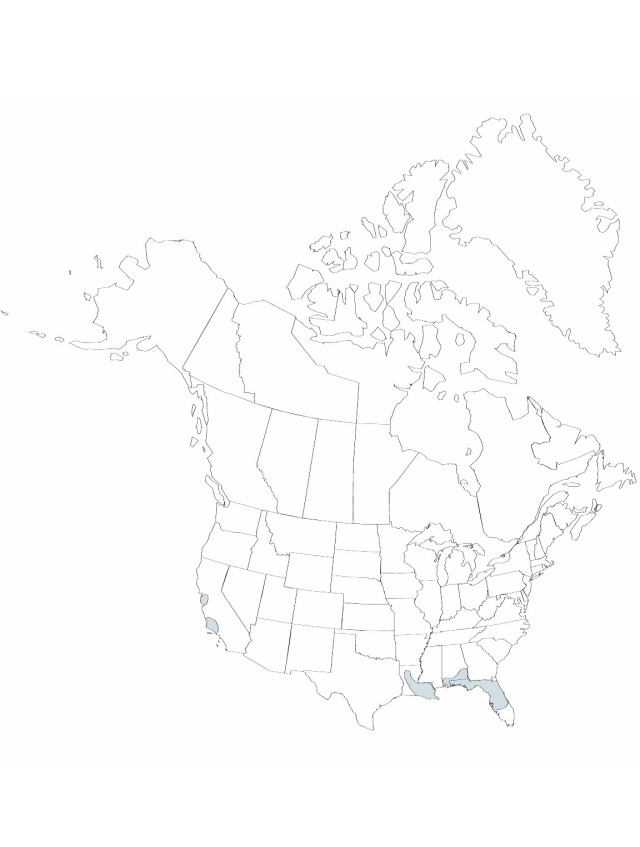Tradescantia fluminensis
Florae Fluminensis 140; plate vol. 3, 152. 1829.
Herbs, decumbent, rooting at nodes. Leaves 2-ranked; blade lanceolate-elliptic to ovate-lanceolate, 2.5–5 × 1–2 cm (distal leaf blades wider or narrower than sheaths when sheaths opened, flattened), margins ciliolate, apex acute, glabrous. Inflorescences terminal, becoming leaf-opposed, sometimes axillary from distalmost leaf axil, 1–2 cyme pairs per stem; bracts mostly foliaceous, occasionally reduced. Flowers distinctly pedicillate; pedicels 1–1.5 cm, glandular-pilose; sepals 5–7 mm, midrib pilose with eglandular hairs; petals distinct, white, not clawed, 8–9 mm; stamens free; filaments white, densely bearded with white hairs.
Phenology: Flowering spring–fall.
Habitat: Woods, roadsides, and open areas, sometimes as weed
Distribution

Ala., Calif., Fla., La., introduced, native, South America (Brazil–Argentina), Africa (South Africa), Australia.
Discussion
This species was recorded north to North Carolina (J. K. Small 1933), but I have not seen any supporting records from Georgia or North Carolina.
Selected References
None.